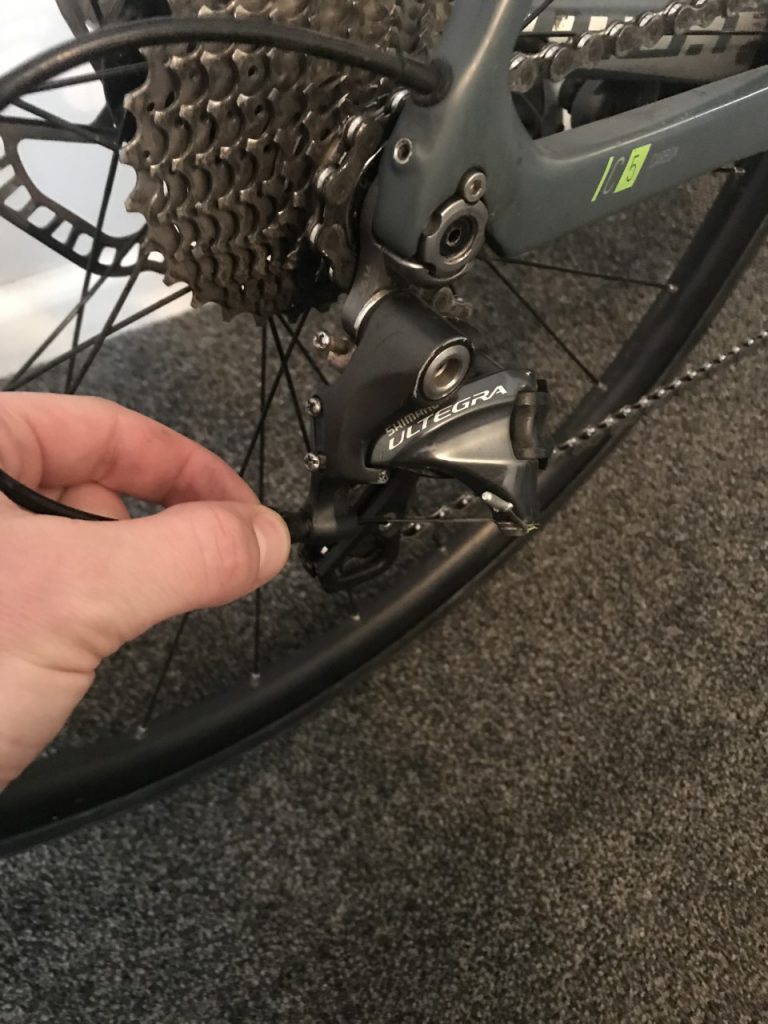No cyclist should have to put up with gears that are slow to shift up and down their cassette. We all know how to change gears, but how many of us know how to maintain them? Today’s post is going to help you bid adieu to your clicking and ticking gears. Indexing gears may seem tricky and the job for a bike shop, however, after this guide you’ll be mastering the mech like a pro.
Know Your Limits
Before we begin its important to check the limit screws – you’ll find these at the rear of the mech, two small screws, often marked with ‘L’ and ‘H’.
The limit screws determine the full range of movement of the derailleur. They stop the chain from falling off the inside of your cassette, and potentially into your spokes (no one wants that) or to stop the chain falling off the outside of the cassette, towards your frame.
To check your limit screws you have to:
- Shift the gears so that you are in the smallest sprocket in the rear derailleur.
- By hand, push the mech all the way up toward the wheel until it reaches its full range of motion. Don’t push beyond this point or you can and will damage it. Make sure that the mech is directly beneath the biggest sprocket.
- Slowly release the mech and check that it lines up perfectly with the smallest sprocket of the cassette.
- If the mech isn’t lining up perfectly with either the biggest or smallest sprockets, you need to adjust your limit screws. Depending on the make and age of your mech, this is typically carried out with either a crosshead or Phillips head screwdriver. We have plenty of multi-tools that includes both of these.
- You now need to adjust the limit screws so that the mech lines up perfectly at either end of the cassette.
- Adjust the ‘H’ screw to adjust the mech when the bike is shifted down to the smallest sprocket. Tune this up until the chain is perfectly in line with the small sprocket.
- Turn the ‘L’ screw to adjust the mech when the bike is shifted up to the biggest sprocket. Tune this up until the chain is perfectly in line with the large sprocket.
- Hey presto, the limit screws are now correctly set.

Tune it up
Now that you have your limit screws where you want them, its time to tune the indexing of your bike’s rear mech. To do this we must now use the small barrel adjuster, it’s usually located near the shifter or on the derailleur. Road bikes often have an inline barrel adjuster on the cable. It increases or decreases the tension on the cable, which in turn alters how the mech moves up and down the cassette.
- Change your gears so that the chain is running on the small chainring at the front and the smallest sprocket of the cassette.
- Shift up the cassette (towards the biggest sprocket) and observe how well the chain is moving up and down. You may notice that it takes some time for the chain to get into the next sprocket, or doesn’t shift at all. If your gears are shifting ‘slow’ you will need to turn the barrel adjuster counterclockwise (as you look on it from the back of the bike) until the shift is smooth. Rotating the adjuster counterclockwise effectively moves the entire mech toward the wheel.
- From there work your way up the cassette while still in the small ring, making small adjustments with the barrel adjuster as you go until the shifts are all perfect. Turn the adjuster clockwise if you need to move the mech away from the wheel.
- When you’re happy that you’ve achieved smooth, fast shifting through the gears when you’re in the small chainring, go through steps 2 to 3 while on the big chainring at the front.
- When you’ve completed all the steps you should find your gears running as smooth as they did when the bike was new.





